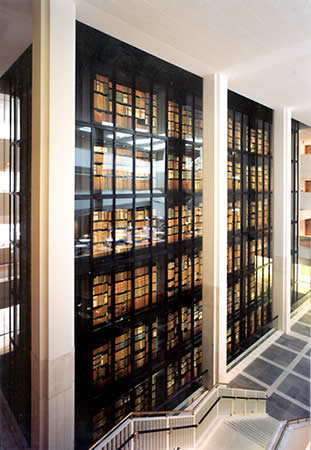The British Library and the India Office Records
 ‘This remarkable resource makes widely available for the first time a treasure trove of East India Company documents, long available only to readers in the India Office reading room in London. Having such a vast series of easy to access and clearly digitised archival materials at one’s fingertips will prove to be a game-changer, inevitably generating extraordinary opportunities for teaching and research – for the established scholar and beginning student alike.’
‘This remarkable resource makes widely available for the first time a treasure trove of East India Company documents, long available only to readers in the India Office reading room in London. Having such a vast series of easy to access and clearly digitised archival materials at one’s fingertips will prove to be a game-changer, inevitably generating extraordinary opportunities for teaching and research – for the established scholar and beginning student alike.’
Philip Stern (Duke University), author of The Company-State: Corporate sovereignty and the early modern foundations of the British Empire in India
The India Office Records at the British Library are the repository of the archives of the East India Company (1600-1858), the Board of Control or Board of Commissioners for the Affairs of India (1784-1858), the India Office (1858-1947), the Burma Office (1937-1948), and a number of related British agencies overseas.
The geographical focus of the India Office Records is on the territories now consisting of India, Pakistan, Bangladesh and Burma and their administration before 1947. The records also include source materials for neighbouring or connected areas at different times, covering not only south Asia, but also southeast and central Asia, the Middle East and parts of Africa. The official archives of the India Office Records are complemented by over 300 collections and over 3,000 smaller deposits of private papers relating to the British experience in India.
The India Office Records are administered by The British Library as part of the Public Records of the United Kingdom, and are open for public consultation. The majority are described in the British Library’s manuscript catalogue.
Adam Matthew’s East India Company resource will, when complete, consist of classes A, B, C, D, E, G and F of the IOR. Classes IOR/A, B and D comprise the foundational charters of the Company plus the minutes and memoranda of its various central administrative organs, whilst IOR/C contains the minutes of the Council of India, the main administrative body following the transfer of power from Company to Crown in 1858. Penny Brook, curator of the India Office Records, describes these classes as the ‘backbone’ of the whole archive of material. Class G consists of the Company’s ‘factory records’: diaries and other proceedings from 39 different sites in south and east Asia, the Middle East and Africa at which the Company maintained 'factories' (trading posts). These provide a unique and invaluable window onto the global trading activities whose pursuit was the Company’s founding purpose.
Class E comprises of correspondence between the East India Company, the Board of Commissioners for the Affairs of India, the Company’s various settlements and Presidencies throughout Asia, government departments, and European houses of agency. The records offer a fascinating insight into the early voyages of the Company and its shifting interests from trade to the gaining of territorial power.
Class F, which we are digitising in four modules with the first now published, consists of the correspondence of the Board of Commissioners who were responsible for supervising the proceedings of the Company in all matters of administration and approved the Company’s dispatches to India, with power to alter them as it saw fit. These records expand beyond the Factory Records focus on the commercial and explore the wider political and military activities of the Company.


